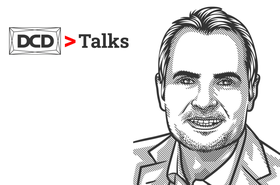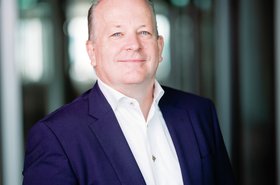The data center industry has witnessed explosive growth over the past decade. The ever-increasing demand for cloud services and the expanding global use of web-enabled devices have been the key drivers.
Right now, the exponential progress of artificial intelligence (AI) and machine learning is prompting a fundamental shift in data center design and site selection. Hyperscalers are engaged in a race to scale where speed is of the essence. Their requirements will need to be met by a developer partner model that does not yet exist.
Industry changes are likely to favor a self-build investment approach rather than the traditional colocation model, a shift that will place greater emphasis on the pre-development process. The current hyperscale demand that is forecast cannot be satisfied using the historic supply chain.
Consequently, developer partners will need to remodel their service offerings in order to fulfill the specific demand and scale of AI developments in the next five years.
Meeting the needs of hyperscalers
In 2023, the total amount of global hyperscale capacity reached 15.5 Gigawatts (GW) of operational (built-out) capacity. About 73 percent of that capacity is represented by the world’s largest four hyperscale platforms: AWS, Microsoft Azure, Google Cloud, and Meta.
Unsurprisingly, therefore, the developer partner strategy as a response to the current trend will be dictated to a large extent by the requirements of these hyperscalers.
Power is king
At the heart of the seismic shift in our industry is the need for ever more sustainable power. A Generative AI search, now embedded in most hardware, can use up to 15 times more power than a traditional search. Just one AI-generated image can use the equivalent of 50 percent of a total phone battery charge.
Previously, Cloud and colocation operators typically designed buildings at about three kW/sqm. However, when it comes to emerging AI specifications, designers must work to approximately 10kW/sqm. Building massings are also growing to meet this increase.
The historic benchmark efficiency ratio of plant to IT space associated with Cloud data centers is about 60:40. With AI, that ratio is now about 80:20. So there’s a fundamental change in the basic design, land, and power requirements of the new breed of data centers and hence the investment approach needed.
For hyperscalers, this high-density design is likely to speed the transition from the colocation model to self-build. Thanks to huge capex demand over the next five years in the race to scale, hyperscalers are now considering leasing powered shell and core facilities to create a stock of future-ready AI capacity in new territories quickly and effectively.
To meet the dynamic requirements of that new world, developer partners will have to offer not only powered shell and core products but also build-to-suit services.
New territories
Cloud follows population densities and levels of connectivity such as those seen in the traditional Tier 1 EU markets of Frankfurt, London, Amsterdam, Paris, and Dublin (FLAPD). These factors sit well with the proven colocation development model.
However, we’re seeing that AI data centers follow large sustainable power capacity and access to vital data clusters. This in turn highlights the issue of data sovereignty, underlined by the need for in-country data storage.
With power requirements for data centers growing exponentially, we are seeing a scarcity of colocation supply in the Tier 1 (FLAPD) markets, driven by regional power, and water supply limitations. Municipalities and their development strategies are typically responding to these limitations by placing embargoes and moratoriums on new data centers in traditional Tier 1 locations, pushing AI sites away from population centers, and reducing the societal benefit of reusing our waste heat.
In addition, data center growth is experiencing significant competition from other high-power users including electric vehicle infrastructure and advanced manufacturing.
Hyperscalers and their developer investment partners need to consider options on land where they know power will become available within a five-year window. Those developers with a network of local land opportunities that can be readily secured are therefore likely to prove most attractive in Tier 1 suburbs and Tier 2 and 3 territories.
Joined-up planning requirement
The European Commission estimates that electricity consumption will increase by 60 percent by 2030 while power generation capacity needs significant investment to meet renewable energy targets. However, the current strategy for grid expansion is not fit for purpose.
Data centers are now becoming critical infrastructure and cannot be planned for without reference to water, fiber, reuse of waste heat, and sustainable power grid strategies. To make this happen, there needs to be a coordinated approach so that the planning of data centers is integrated into national-level sustainable infrastructure strategies.
The global data center industry today has roughly the same carbon footprint as the entire global aerospace industry of between two and three percent of total global emissions. In five years that footprint is forecast to double. We must plan now for data center expansion as part of a linked-up sustainable energy system.
Planning guidance has to be joined up with infrastructure planning. By taking this approach, we can maximize the benefits to society, including the heating of homes, schools, and hospitals from data centers. Morally and logically, it’s the right thing to do.
A new breed of developer partner
The demand for new data center locations also brings with it increased development risks. Developer partners will therefore need to focus on the ‘partner’ part of the equation. How best to support hyperscalers through the research, site selection, and pre-development phases of each project in new territories?
One answer is to adopt a ‘team of teams’ approach. So, while a developer partner will still own that central relationship with a particular hyperscaler, it is the ability to broker access to expertise that will be crucial. Hyperscalers will need elite local advice in areas such as land acquisition, power procurement, powered shell and core construction, data center design management services, pre-construction planning and permitting services, capital and investment funding, and land portfolio management.
Developer partners will have to demonstrate on-the-ground expertise in newer (Tier 2 and Tier 3) markets, drawing on deep knowledge of the local political and operational landscape.
It’s critical that our industry gets it right. We all want the benefits that AI will bring in accelerating medical research and helping us to create new energy solutions that can build a more sustainable future. But it’s a catch-22. The better and more useful our data becomes, the more we want to use it. We must therefore be able to support the hyperscalers fully by de-risking the processes associated with the growing demand for new locations.
After all, delivering the required digital infrastructure – sustainably and in the given timeframe – is the only way the global economy can benefit from AI and reach its full potential.
More from NDC-Garbe
-

Sponsored Artificial intelligence revolutionizes data centers: New requirements for infrastructure and cooling
AI-driven demands are transforming data centers, pushing for innovative infrastructure designs and advanced cooling solutions to support the next generation of computing power
-

DCD>Talks Standardization & Modularity with Herbert Radlinger, NDC-GARBE Data Centers Europe
Dive into standardization and modularization with this DCD>Talk from our live DCD>Connect Silicon Valley event
-

Sponsored Data centers challenges in the German market
The industry faces significant challenges including stringent legal requirements, energy efficiency mandates, and infrastructure limitations

